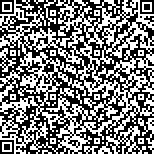| Quote
: |
黄翔,李晓宏,汤达承,陈盼.氧化苦参碱通过抑制HMGB1缓解坐骨神经慢性压迫性损伤神经性疼痛[J].湖南中医药大学学报英文版,2023,43(7):1201-1205.[Click to copy
] |
|
| |
|
|
| This paper
:Browser 1508times Download 689times |
| 氧化苦参碱通过抑制HMGB1缓解坐骨神经慢性压迫性损伤神经性疼痛 |
| 黄翔,李晓宏,汤达承,陈盼 |
| (佛山市第一人民医院疼痛科, 广东 佛山 528000) |
| 摘要: |
| 目的 建立大鼠坐骨神经慢性压迫性损伤(chronic constriction injury,CCI)模型,探索氧化苦参碱(oxymatrine,OMT)对CCI大鼠神经疼痛的缓解作用。方法 30只大鼠随机分为Sham组、CCI组、OMT组,每组10只。OMT组大鼠于术后7 d内每2天鞘内注射OMT(1.2 mg/kg),CCI组和Sham组同一时间注射等体积的生理盐水。各组大鼠于术后第1、3、7、14、21天检测后足机械缩足反射阈值(mechanical withdrawal threshold,MWT)和热缩足反射潜伏期(paw withdrawal thermal latency,PWTL)。采用Western blot法检测大鼠脊髓组织中高迁移率族蛋白1(high mobility group box-1 protein,HMGB1)和Toll样受体4(Toll-like receptor 4,TLR4)表达情况,使用ELISA法检测大鼠脊髓组织中肿瘤坏死因子-α(tumor necrosis factor-α,TNF-α)和白细胞介素-1β(interleukin-1β,IL-1β)的表达情况。结果 CCI组大鼠表现出甩腿、舔足等明显的疼痛表现,提示造模成功。与Sham组比较,CCI组大鼠术后第7、14、21天的MWT显著降低(P<0.05),PWTL显著缩短(P<0.05)。与CCI组相比,OMT组大鼠术后第7、14、21天的MWT明显增加(P<0.05),PWTL显著升高(P<0.05)。与Sham组比较,CCI组大鼠脊髓组织中HMGB1、TLR4的蛋白表达水平及TNF-α、IL-β的含量显著上升(P<0.05);与CCI组比较,OMT组大鼠脊髓组织中HMGB1、TLR4的蛋白表达水平及TNF-α、IL-β的含量明显下降(P<0.05)。结论 OMT可能通过下调CCI大鼠脊髓组织中的HMGB1、TLR4、TNF-α及IL-β,缓解CCI大鼠的神经性疼痛。 |
| 关键词: 神经性疼痛 氧化苦参碱 高迁移率族蛋白1 Toll样受体4 神经炎症 坐骨神经压迫 |
| DOI:10.3969/j.issn.1674-070X.2023.07.008 |
| Received:February 21, 2023 |
| 基金项目:广东省医学科研基金项目(B2022354)。 |
|
| Oxymatrine relieves neuropathic pain in rats with chronic constriction injury of sciatic nerve by inhibiting HMGB1 |
| HUANG Xiang,LI Xiaohong,TANG Dacheng,CHEN Pan |
| (Department of Pain Management, the First People's Hospital of Foshan, Foshan, Guangdong 528000, China) |
| Abstract: |
| Objective To establish a rat model of chronic constriction injury (CCI) of the sciatic nerve, so as to explore the analgesic effects of oxymatrine (OMT) on neuropathic pain in CCI rats. Methods A total of 30 rats were randomly divided into Sham group, CCI group, and OMT group, with 10 rats in each group. The rats in OMT group were intrathecally injected with OMT (1.2 mg/kg) every 2 days within 7 d after surgery, while the rats in CCI group and Sham group were injected with the same volume of normal saline at the same time. The mechanical withdrawal threshold (MWT) and paw withdrawal thermal latency (PWTL) of rats in each group were measured on the 3rd, 7th, 14th, and 21st days after surgery. In addition, the expression levels of high mobility group box-1 protein (HMGB1) and Toll-like receptor 4 (TLR4) in the spinal cord tissue were determined by Western blot, and the expression levels of tumor necrosis factor-α (TNF-α) and interleukin-1β (IL-1β) in the spinal cord tissue were examined by ELISA. Results The rats in CCI group showed obvious pain manifesting as swinging legs and licking feet, suggesting successful modeling. Compared with Sham group, the rats in CCI group showed significantly lower MWT on the 7th, 14th, and 21st days after surgery (P<0.05), with significantly shorter PWTL (P<0.05). Compared with CCI group, MWT of the rats in OMT group was significantly higher on the 7th, 14th, and 21st days after surgery (P<0.05), with significantly longer PWTL (P<0.05). Compared with Sham group, the protein expression levels of HMGB1 and TLR4 as well as the content of TNF-α and IL-1β in the spinal cord tissue of rats in CCI group significantly increased (P<0.05). Compared with CCI group, the protein expression levels of HMGB1 and TLR4 as well as the content of TNF-α and IL-1β in the spinal cord tissue of rats in OMT group significantly decreased (P<0.05). Conclusion OMT may relieve neuropathic pain in CCI rats by down-regulating HMGB1, TLR4, TNF-α, and IL-β in the spinal cord tissue. |
| Key words: neuropathic pain oxymatrine high mobility group box-1 protein Toll-like receptor 4 neuroinflammation constriction of the sciatic nerve |
|

二维码(扫一下试试看!) |
|
|
|
|


